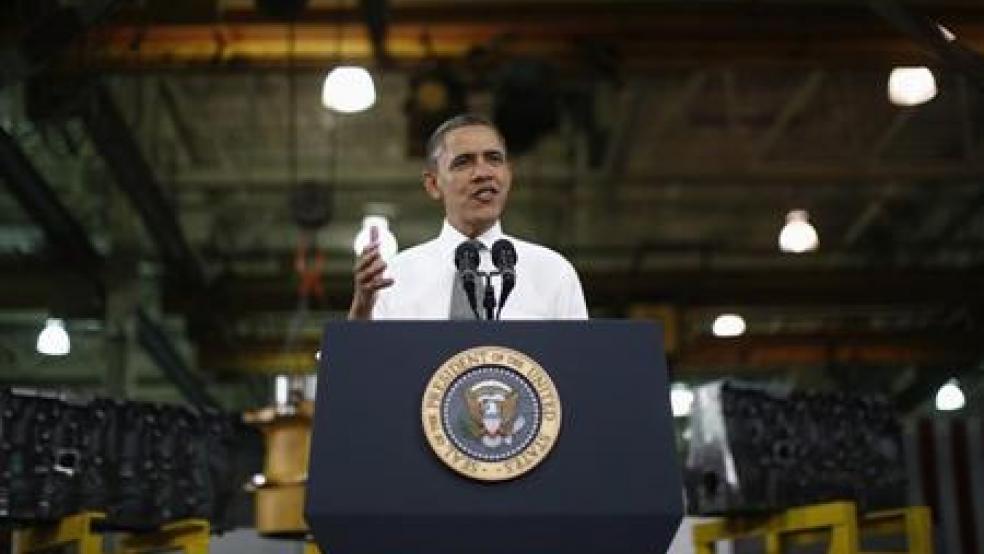WASHINGTON (Reuters) - A former furniture warehouse in a struggling Rust Belt city has emerged as a national model for innovation after President Barack Obama highlighted it in his State of the Union speech on Tuesday.
Obama now aims to convince Congress to spend $1 billion to replicate the model nationwide. But it will be a tough sell to Republicans, who oppose government spending on industry and argue private capital will respond if there is real demand.
Yet even before the facility is fully up and running, local business leaders say Youngstown, Ohio's National Additive Manufacturing Innovation Institute (NAMII) is already spurring interest in a promising new technology known as "3D printing" that could bring new manufacturing jobs to the region.
They say the federal government is bringing together researchers and businesses that could make the region a hotbed of cutting-edge manufacturing.
"This is absolutely a net positive for the Youngstown area," said Eric Planey, a vice president with the Youngstown Chamber of Commerce.
Also known as additive manufacturing, 3D printing creates solid objects from a digital model by laying down successive thin layers of material, rather than the traditional "subtractive" approach, in which objects are created by cutting them out of a solid chunk of metal or plastic.
The process has been used to build prototypes for 25 years, but now is making its way into regular production. Companies such as General Electric Co plan to use 3D printing to build lightweight aircraft parts, while dentists use it to create crowns in the space of an hour rather than two weeks.
The Obama administration has been promoting the idea of a manufacturing revival as labor-saving technology, rising costs overseas and cheap energy at home have prompted some manufacturers to bring factory jobs back from overseas.
Economists say the United States is long past the days when steel mills, auto plants and machine jobs boosted millions of unskilled Americans into the middle class. Manufacturing now represents 12 percent of the U.S. work force, down from 20 percent in 1979.
Youngstown has seen some manufacturing jobs return since its giant steel mills shut down in the 1970s, but increased automation means that they employ fewer people than they would have several decades ago.
A new pipe factory that would have needed 1,000 workers 25 years ago now employs 350, Planey said, while a General Motors assembly plant that employs 5,000 produces as many cars as it did when it employed 14,000 people.
Obama administration officials say manufacturing might not ever employ as many people as it once did, but the sector has broader benefits to the economy because it spurs research and development and boosts exports.
Taking a page from similar efforts in Germany, the administration last year picked Youngstown as the site of an "innovation institute" that would spread new manufacturing ideas among a wide range of businesses.
"You are using a facility as essentially like a teaching hospital," Gene Sperling, the director of the White House National Economic Council, said on a conference call on Wednesday. "When there are developments in technology and research, you have the capacity to share them with smaller businesses."
GOVERNMENT, BUSINESS, UNIVERSITIES
Government agencies such as the Department of Defense, the Department of Energy, NASA and the National Science Foundation put up $30 million for the effort, matched by $40 million from businesses such as Northrop Grumman Corp and universities including Carnegie Mellon.
In his State of the Union speech, Obama asked Congress to spend $1 billion to set up 14 more innovation centers across the nation. He said he would set up three facilities on his own, using existing funds, if lawmakers do not act.
Republicans, who have fought Obama's stimulus for green technology, are unlikely to soften their stance on spending.
"Washington has a spending problem that threatens the prosperity of every child, every family, and every small business in America," House of Representatives Speaker John Boehner, who ran an Ohio manufacturing firm before entering politics.
When the Youngstown center is fully up and running in the next several weeks, the 11,000 manufacturers in the region will get a chance to learn how 3D printing works and determine whether they want to invest in it themselves, said NAMII president Ralph Resnick.
Local workers also could learn how to operate the new equipment, and experts could ensure that the final product will meet existing quality standards.
The idea is to create enough of a body of expertise around the technology to turn the region into a hotbed of additive manufacturing, Resnick said.
"What we're looking to work on is pervasive issues," ones that affect many manufacturers, he said. "If we solve it, it's all good for the community in general."
Like other forms of "high tech" manufacturing, additive manufacturing doesn't have much use for low-skilled workers doing repetitive tasks on an assembly line.
But if it catches on, it could create more demand for industrial designers, inventory managers and other skilled workers, said Todd Grimm, an industry consultant based in Kentucky. It also could spur a new wave of business startups as the barriers to entry are much lower than they are in traditional manufacturing, he said.
"The economy will benefit. To what extent? Will it even be measurable? Who knows - that's for somebody with a crystal ball," he said.
(Additional reporting by Mark Felsenthal; Editing by David Lindsey, Martin Golan and Lisa Shumaker)


